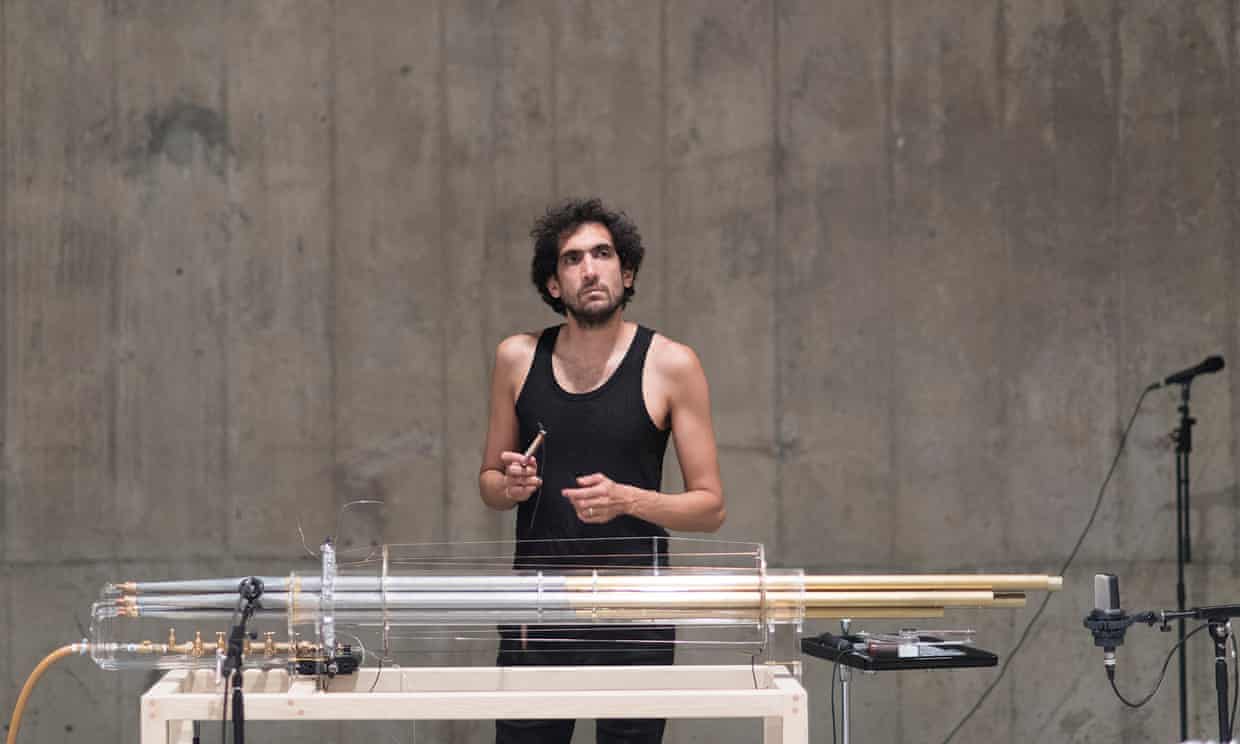An improvised performance with ten newly created instruments
The Reverse Collection (2013 – 2016)
Creator: Tarek Atoui is a Beirut based artist and composer. What I admire about his work is that they’re grounded in extensive knowledge about music history and tradition.

Photograph: Oli Cowling/Tate Photography
The Reverse Collection is an ensemble of newly created instruments that were conceived in a few steps. The first stage was born out of the storage facilities of Berlin’s Dahlem museum, which houses the city’s ethnographic and anthropological collections. Atoui found that in the museum’s stash of historical instruments, there were many instruments with hardly any information/indication of their sociocultural provenance or any instructions on how to play them. So, he invited established musicians and improvisers to play with them, and recorded what happened, even though they had no idea how to use them.
The second stage was in collaboration with instrument makers. He asked them to listen to those recordings – layered and edited – and create new instruments on which someone could play something that sounds similar. Around 8 new instruments where created, and were used for several performances and new compositions, called the Reverse Sessions.
Finally, the third stage, which is The Reverse Collection, had a new generation of ten instruments to work with. Atoui recorded several performances to create a collection. This was done by a multi-channel sound work in an exhibition space, that was evolving over the whole duration of a show and allowing multiple associations between object, sound, space and performance. More on the performance and what the instruments are here.
I chose this project because I really admire the translation of historical artifacts into a modern instrument. Even though the result was a physical manifestation, the process of creating and understand the instruments was computational.
![[OLD FALL 2019] 15-104 • Introduction to Computing for Creative Practice](https://courses.ideate.cmu.edu/15-104/f2019/wp-content/uploads/2020/08/stop-banner.png)